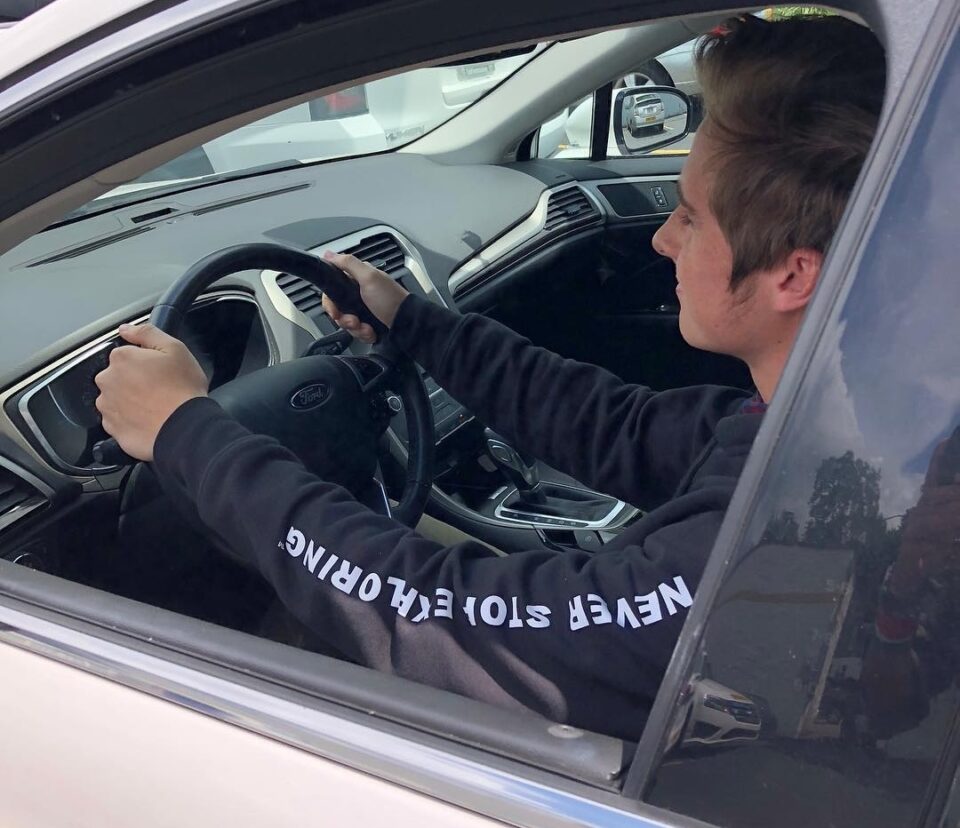Photos courtesy of OFFICIAL Driving School
Written by Tanya Terry
When school let out for middle school and high school aged students, The 100 Deadliest Days of Driving began, according to Benny Malburg, president and CEO of OFFICIAL Driving School.
According to Malburg, the idea behind the Deadliest Days of summer is that these are the days students are out getting driver’s education, getting driver’s licenses and hanging out with their friends.
“They have this greater amount of freedom in the summer,” he explained.
The “Deadliest Days” begin in June and end in August.
There has been a 46% increase in teen crashes across Michigan since 2016. Tragically, 87% of those crashes resulted in fatalities.
Malburg would like to see the media, drivers’ educators, schools and parents involved to help reduce these numbers. He said, to kids, when school is out, safety may not be the most important thing on their mind.
“They need reminders,” Malburg said.
In Michigan, we are already seeing a 16-year record high in deadly crashes, with more than 1,100 in 2021.
“First and foremost, I think the main culprit in the increase of crashes and deaths, is that there’s a lot of parents out there that are actually skipping the formalized driver education altogether. Actually teen driver education has been declining steadily over the past 20 years. That’s because parents are waiting longer and longer to get their children behind the wheel. Once you’re over 18, you actually don’t have to take a formalized class. So, you can go and take your road test, and if you can parallel park and not get enough points to fail the road test, they put you on the road.”
Malburg said this doesn’t mean one has been trained to be a driver.
“The second biggest culprit I think is the way we interact with our phones. It’s become such a big habit for us, that when it goes off, we pick it up. When it goes off, we’ve got to know what is happening.”
Malburg said these habits must be broken.
He tells parents they need to be an example for their kids because kids pick up on habits from their parents subconsciously-whether it seems like they want to listen to their parents or not.
“You can’t be a bad example and expect your kid to be a good driver. Things like putting your phone on do not disturb is probably one of the best things you can do to be a safer driver and a driver that’s not distracted.”

Malburg suggests a feature called “do not disturb while driving.”
“On an iPhone, you can put a message up that says: ‘Hey, I’m driving,” or ‘hey, I’m busy. I’ll get back to you soon.’”
Malburg pointed out callers are able to text “urgent” with the feature when needed so the person they are calling can pull over.
“There’s an awesome pledge that’s on the state’s website and on our website and our blogs. You can actually sign it with your kid. It’s basically saying, ‘I’m making the commitment not to be a distracted driver, and you’re going to do it, too.’ It’s this idea of not just saying: “Kid, you’re making this commitment.’ It’s something you’re making together.”
Outside of distracted driving, the leading cause of death for teens is speeding. In regard to speeding, there is a lot of technology available to parents to help monitor their child’s driving. Speed inhibitors are available, for example.
Some people may not be aware that young drivers under age 17 are not able to have more than one passenger in their car under age 21.
“The first thing you want to do when you get your license is go pick up all your friends, and that’s not actually legal. That’s across the whole state.”
Malburg pointed out making sure the air conditioner is set, as well as music playlists, is imperative for all drivers.
The Life 360 app tracks your speed and location, and Life Saver locks your phone while your vehicle is in motion. Another app, Trip Score, grades driving and rewards the user with points to earn food items at McDonald’s and other items.
With all the flash flooding that has happened in recent years, Malburg warns hydroplaning and visibility can be issues in the summer. Under the Basic Speed Law, a person can get a ticket for driving the speed limit if the weather does not permit it.
According to Malburg, the best thing to do when a person is hydroplaning is to ease off the gas and continue to steer where they want to go.
“You should be able to see a good distance ahead of you. Otherwise, you’re not going to be ready for the hazards ahead.”
If you can’t see, you should slow down or (if you still can’t see) pull over to the side of the road and put on emergency flashers. Malburg said he had to do this on the way to a concert last year.
Malburg reminds parents that until their children turn 18, they can, as parents, go to the Secretary of State and revoke their child’s driver’s license.
He also reminds drivers of all ages that, in his opinion, driving is a privilege, not a right.


